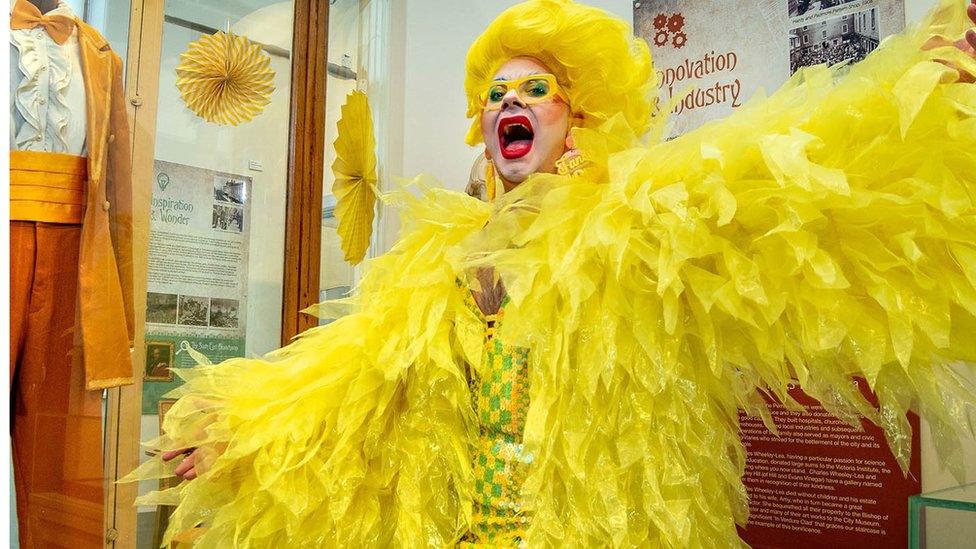Oxford museum shows 'surprisingly' colourful Victorian era
- Published

The display features a purple dress and shoes dyed with the first aniline colour, Mauvine
A major exhibition, featuring one of Queen Victoria's mourning dresses, is hoping to show the true colours of an era often labelled as bleak.
The Ashmolean Museum's Colour Revolution is presenting art, fashion and design from the Victorian period.
Curator Matthew Winterbottom said it aimed to be "a joyous and surprising tour" through a "misunderstood" period of history.
The items will be display in Oxford until February.

Queen Victoria’s mourning dress encapsulates the dark preconceptions of the era, the museum said
The exhibition features 140 objects from international collections ranging from John Ruskin's studies to fashion, jewellery and homeware of Victorian Britain and Europe.
It opens with Queen Victoria's mourning dress, which shaped the view of Victorian Britain as a dark era, the museum said.
But other items show that artists, designers and people of the 19th century embraced colour following developments in art, science and technology.
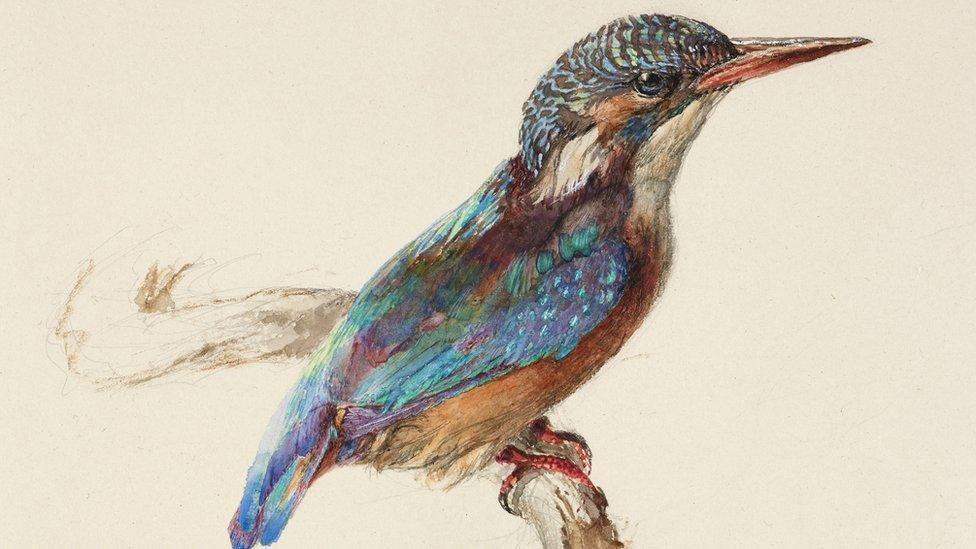
John Ruskin believed artists should stick to the God-given colours of nature
Among the fashion examples are a purple dress, petticoat and shoes that show the use of aniline dyes.
Mr Winterbottom said: "The Victorian colour revolution made a radical impact on the lives of everyday people throughout Europe and beyond; and this is a chance to see some the 19th century's most colourful and spectacular works of art, fashion and design."
Other themes explored are women innovators, artists with famously different attitudes and the use of arsenic in a new green dye that sometimes claimed lives.
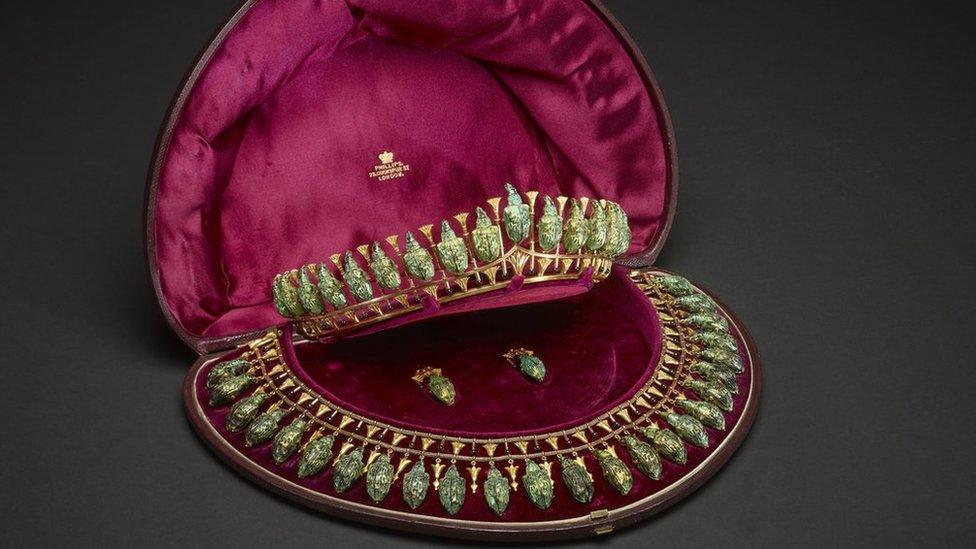
Lady Granville’s beetle parure and case are part of the exhibition
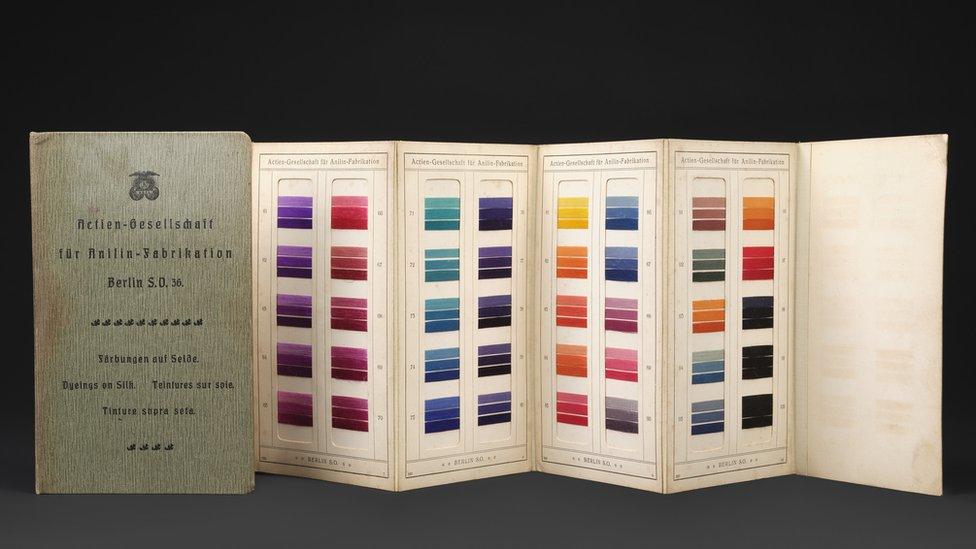
Aniline, a by-product of coal-tar, introduced a rainbow of possibilities to Victorian wardrobes

Follow BBC South on Facebook, external, Twitter, external, or Instagram, external. Send your story ideas to south.newsonline@bbc.co.uk.
Related topics
- Published26 March 2023
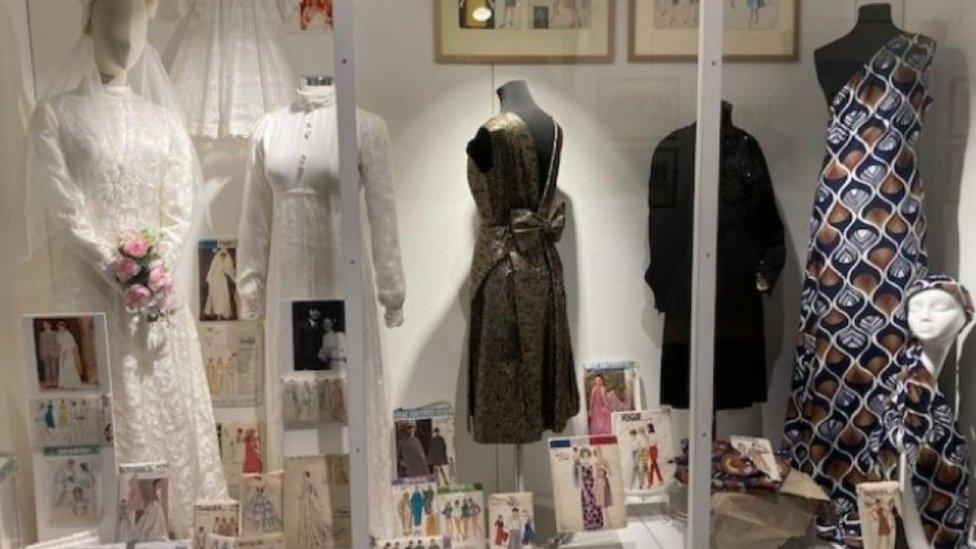
- Published1 February 2022
